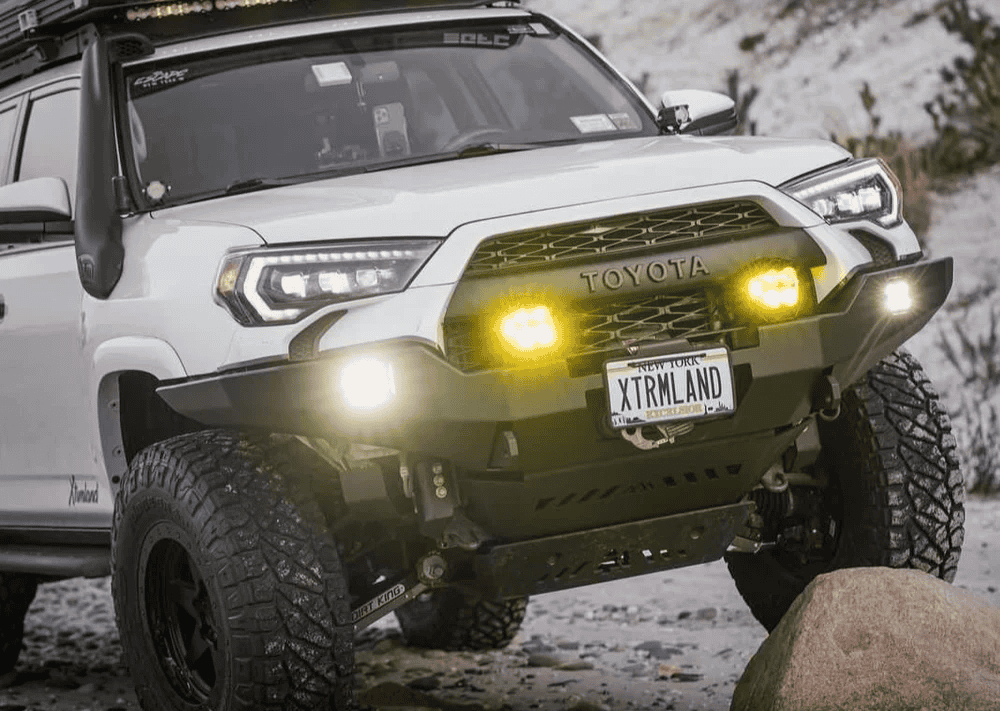Overland Vehicles

The Scout II runs leaf springs at all four corners, which makes lift strategy the backbone of any build. Two proven routes exist. A modest 2.5 to 4 inch lift using high quality leaf packs and matched shocks preserves drivability while clearing 31 to 33 inch tires. A spring over axle conversion adds height and articulation for 33 to 35 inch tires, but demands proper steering geometry, driveshaft angles, and brake line routing.
Caster correction is vital after significant lift. A cut and turn or carefully spec’d shims restores straight line stability and reduces wander. Pair the lift with extended bump stops and tuned shock valving. This keeps uptravel controlled, prevents leaf inversion, and helps the Scout stay composed on washboard and rocky climbs.
A lifted Scout benefits from high steer or crossover geometry to reduce bump steer. Reinforce the steering box and consider hydro assist for 35s and heavier armor. Keep tie rod angles shallow and toe set correctly to protect tires.
Add slip yokes or double cardan joints where needed. Set pinion angles to balance smooth highway trips with reliable joint life on the trail.
Front disc brakes were common, but rear drum-to-disc conversions improve pedal feel and heat management. A proper proportioning valve and fresh lines complete the package.
Many Scouts left the factory with a front Dana 30 and rear Dana 44, while later models gained a Dana 44 front, a stronger foundation for trail use. For durability on 35s, aim for Dana 44s front and rear or consider a beefier rear axle if you plan aggressive use, deep gearing, and a winch.
Lockers change the game. A selectable locker, like an air actuated unit, keeps road manners civil and off road traction decisive. Automatic lockers add simplicity but demand careful throttle in snow and tight corners. Gear ratios should match tire size and engine power band. Common pairings are:
Chromoly axle shafts, quality u joints, and fresh bearings harden the system. Protect diff covers and set proper backlash to prevent noise and heat.
The Scout II typically uses a 5 on 5.5 pattern. Choose wheels with appropriate backspacing to avoid scrub and fender contact at full lock.
Plan for a 9,500 to 12,000 pound winch with synthetic line, solid recovery points, and a protected fairlead. A rig that can self recover saves trips.
Under the hood you may find the legendary IH 304 or 345 V8, or the inline four. Many owners pursue fuel injection conversions to improve altitude compensation, cold starts, and trail angles. Keep heat in check with a modern radiator core, a clutch fan in top shape, or an electric fan package with a shroud that actually moves air at low speed.
The Scout II commonly ran the Torqueflite 727 automatic or a four speed T19 manual. Both are stout when maintained and cooled properly. Transfer cases were typically the Dana 20, with the 1980 model year offering the Dana 300. A twin stick kit and refreshed driveshafts build in trail control and smoothness.
Protect the engine crossmember, transfer case, and fuel tank. Rock sliders tied to the frame guard vulnerable rocker panels. The body is known for rust at floors, rockers, and body mounts, so address structure before adding weight.
Upgrade to modern LED headlights and fog lights for night runs. A clean, fused accessory circuit with relays prevents gremlins. Dual batteries with an isolator support winching and fridge loads without stranding you at camp.
Marine grade flooring, sealed storage, and a roll bar or full cage add safety and durability. Keep controls simple and serviceable.
Turning a Scout II off-road conversion from a parts list into a cohesive system takes planning, fabrication skill, and testing. Geometry changes affect steering feel, brake performance, and tire wear. Incorrect caster, poor shock tuning, or mismatched gears can make a vintage 4x4 fatiguing to drive. A thoughtful build sequence solves problems in the right order and protects both budget and reliability.
OZK Customs builds trail ready overland platforms with this systems approach. From suspension setup and axle work to electrical integration and armor, our team designs and executes upgrades that work together, not just on paper, but in real dirt. See how we approach purpose built rigs here: Explore overland rigs.
If your plan includes fabrication such as rock sliders, skid packages, or bumper systems with recovery points, our crew handles design, fitment, and finish in house. For complex conversions and turn key prep, start with our capabilities page: Custom overland upfit. Want to understand our philosophy, process, and standards before you commit? Learn more here: Why choose OZK.
A well planned Scout II off-road conversion feels calm on the highway and confident on rock, sand, and forest roads. Focus on steering geometry, matched gears, balanced tire size, protected underbody, and wiring that is easy to service. Test in stages, tighten fasteners, and log heat, noise, and vibration. The result is a classic that goes further with less drama.
Based in Fayetteville Arkansas, OZK Customs delivers cohesive overland builds that honor the Scout’s heritage while upgrading every weak link that limits range or safety. Bring your vision and terrain goals. We will map the path, build the kit, and hand you a dialed rig ready for the next trailhead.
Ready to transform your Scout II into a trail-capable, road-safe rig? Share your goals and timeline. OZK Customs will blueprint the build, execute precision fabrication, and deliver a proven setup you can trust on remote terrain.
ADDRESS:
6159 E Huntsville Rd, Fayetteville, AR 72701
PHONE:
(479) 326-9200
EMAIL:
info@ozkvans.com